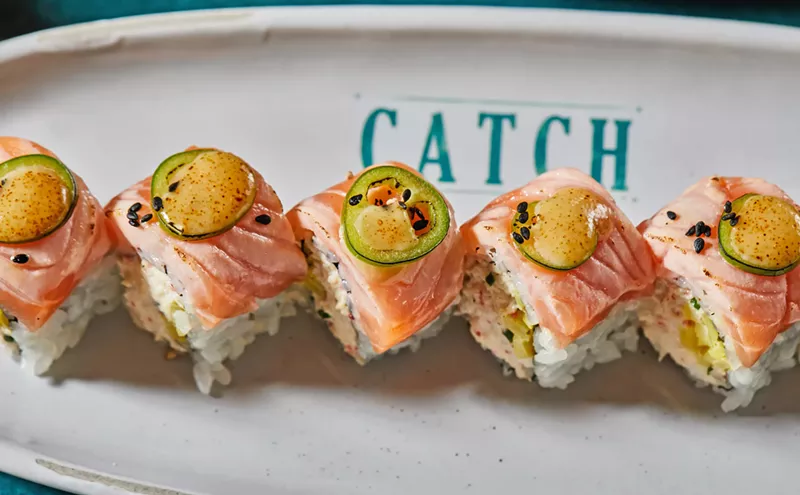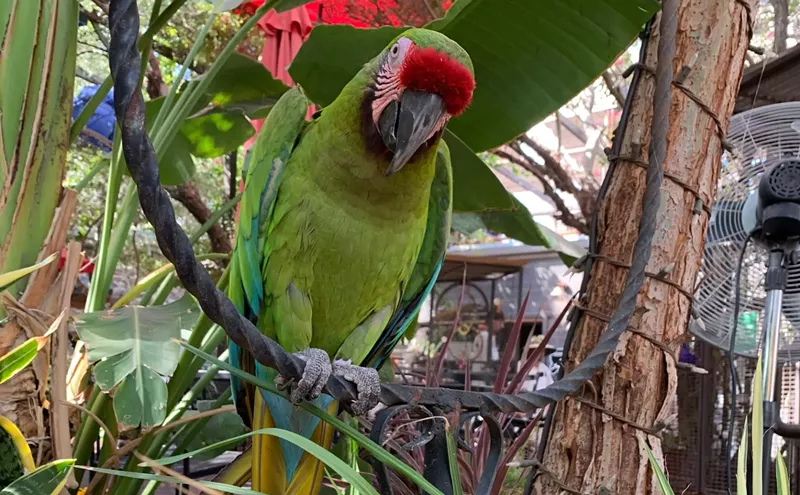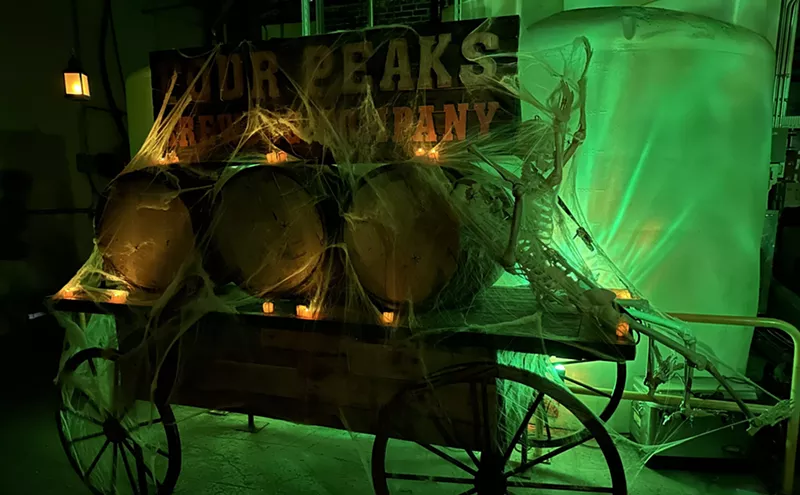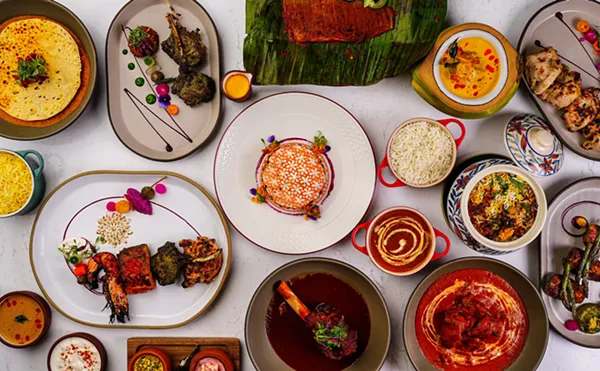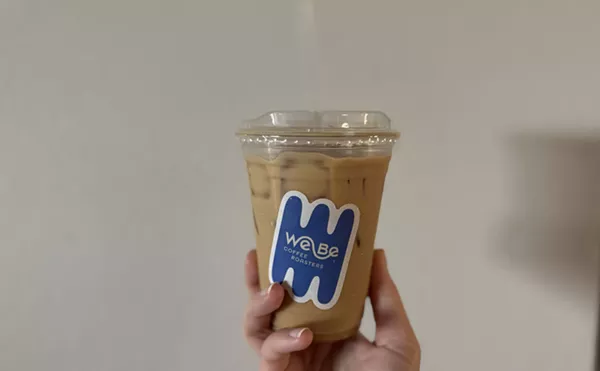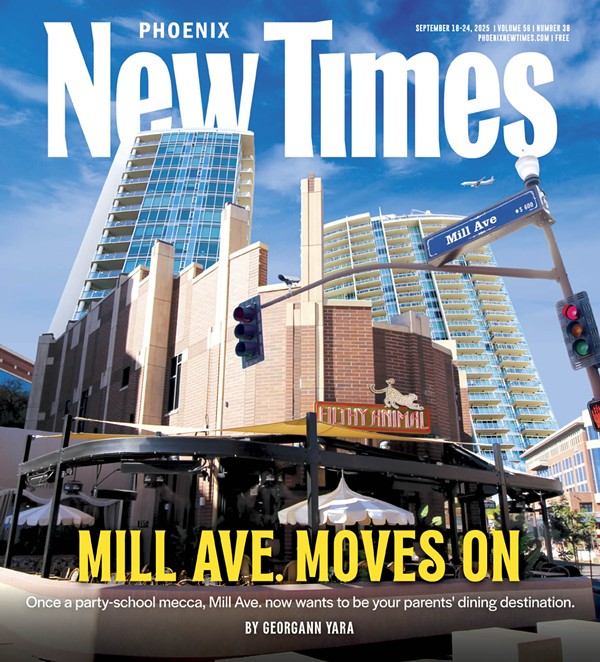To all of the people responsible, we can only say "Thanks" and "What's for dessert?"
STEVEN RESTAURANT & CAFE 1981. Scottsdale. Introduces the contemporary cosmopolitan notion of "casual elegance" into the Valley. Menu features both hamburgers and Southwestern-slanted haute cuisine, while decor marries sophisticated urban styling to cactus-accented pub informality. Ironically, replaces Dr. Munchies (a slick burger & brew fern bar that emblematizes the 1970s) and evolves into Harry & Steve's (a sports saloon for the '90s, although this last trend is introduced into the Valley on a big-time basis by Max's in 1978). Important spiritual heir to the original Steven is Coyote Cafe, opened in 1986.
VINCENT'S
1981. Pinnacle Peak. Becomes the first independent restaurant in the Phoenix area to achieve national culinary celebrity, thanks to a favorable review in the New York Times. Establishes Vincent Guerithault as the Valley's first bona fide "name" chef. In mid-decade, Guerithault moves off the mountain and onto Camelback Road, concurrently adding a broader Southwestern accent to his classical French fare. Original site is taken over by Le Relais, whose chef Christopher Gross becomes the Valley's second gratine idol. CHAR'S
1981. Mesa. Initiates the torrid Thai trend in the Valley of the Sun. Blazing but fresh, varied and inexpensive cuisine catches on with local Sonoran aficionados, enabling the ranks of swell Thai places to swell past two dozen in the ensuing decade. Original Mesa unit closes, but Tempe and Phoenix stores remain hot. (P.S. If you've not tried it, the Valley's Thai food is, on a restaurant-for-restaurant basis, consistently better than the Valley's Chinese cuisine.)
OSCAR TAYLOR'S 1982. Phoenix. Becomes most successful example of the ubiquitous Chicago/Big 4 presence in the Phoenix market. Repository of such important ingredient and service trends as butcher-shop-quality meats, extensive premium beer/liquor lists, quality on-premise baking, gourmet candy retailing and elaborate happy-hour catering. Still going strong at original location although services and product emphases continue to shift and evolve. Important spiritual twin is rib-oriented Don & Charlie's, opened as Carson's in the same year.
PASTA FIGIO'S 1983. Phoenix. Convincingly celebrates the most pervasive food trend of the '80s, the permutation of modest macaroni into complex carbohydrate. Still lasagna at its core, there's the lagniappe of spinach-coloring and exotic-sounding menu listings in unfamiliar Italian. So many of this kind of place opening nationally that inadvertent duplication forces immediate name change to Pasta Segio's. Remains a popular place under new ownership. ENTZ-WHITE
1983. Phoenix. Before Ceres or AJ's or Euro Market, there is this remarkable collection of gourmet retail outlets and fancy cafe kiosks under one roof. Ahead of its time and with too pronounced an accent on prime, the Valley comes to look but does not shop. Ambitious effort folds quickly but is still remembered fondly as a local high-water mark in upscale "feastival" marketing.
ED DEBEVIC'S 1984. Phoenix. Important both conceptually and commercially. A high-spirited Fifties-era celebration of fun foods and diner decor, place catches on quickly with Baby Boomers and their own kids. Phoenix edition of Ed's is a national prototype, leading to subsequent openings in Chicago, Beverly Hills, and Manhattan--how trendsetting can you get? Still impossible to get a seat during peak family business hours. ACAPULCO BAY BEACH CLUB
1985. Phoenix. Teaches a viejo market nuevo tricks by reminding that Mexico does not simply stop at the southern Sonoran border. Pacific Coast culinary concept includes excellent red snapper and crab dishes, and seasonings that stretch far beyond the standard salsa. Owners do away with old-fashioned mom & pop plain premises and chain-restaurant pinata looks, opting instead for a raunchy/ rowdy cantina come-on. Sister establishment takes over Lulu Belle's in 1989. THE RESTAURANT AT THE RITZ-CARLTON
1988. Phoenix. Much ballyhooed appearance of this posh Parisian hostelry on the most expensive piece of commercial real estate in Phoenix signals city's formal inclusion in the global gourmet village. Passes off turn-of-the-century (nineteenth to twentieth) style as locally relevant, supplanting such indigenous customs as siesta with afternoon tea. Raises serious doubts about worth of local culinary culture. Doubts confirmed when restaurant neighbors turn out to be named Houston's and Tuscany.
ARIZONA KITCHEN 1989. Litchfield Park. Not to have worried. Venerable and sumptuously Southwestern Wigwam Resort creates ultimate Arizona dining experience. Merges Mexican, Native American and upscale contemporary cuisines into brilliantly authentic Southwestern statement. Territorial display-kitchen dining room adds terrific kinetic charm.
With consistency and maintenance of pure vision may become most significant Arizona restaurant of the century.
Finally, every decade witnesses the passing of certain venerable establishments that physically encroach on the current vision of progress and are subsequently brought by wrecking ball to a premature end. One of Phoenix's best-loved Mexican-food dives was bulldozed early in the decade when the city at long last decided to clean up downtown's once-notorious "Deuce" skid row on Second Street. Adios, Nogales Cafe.



